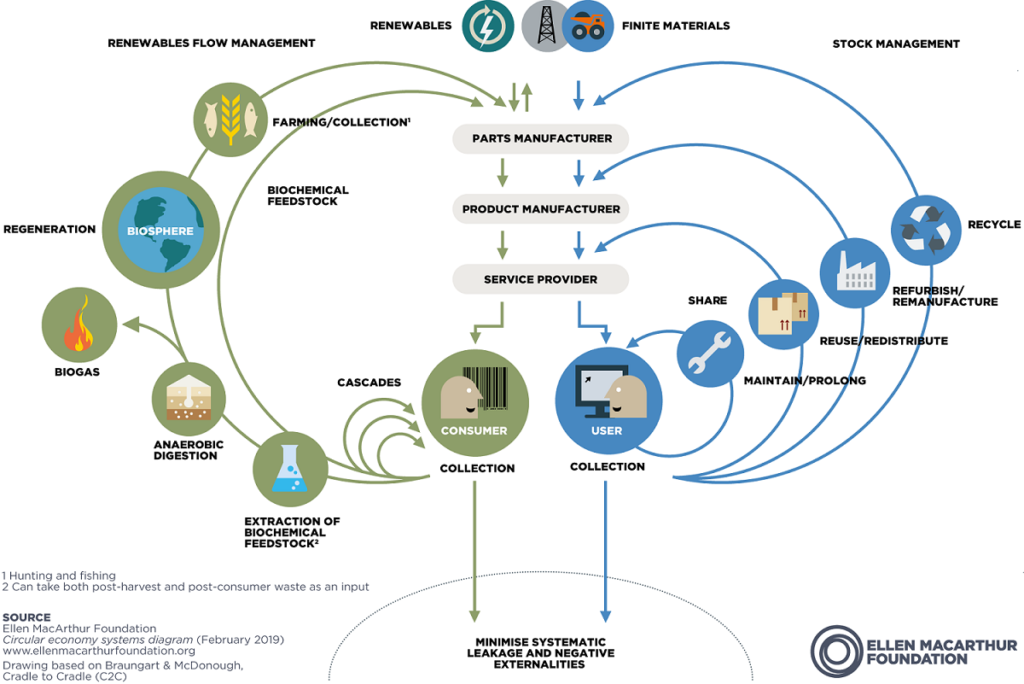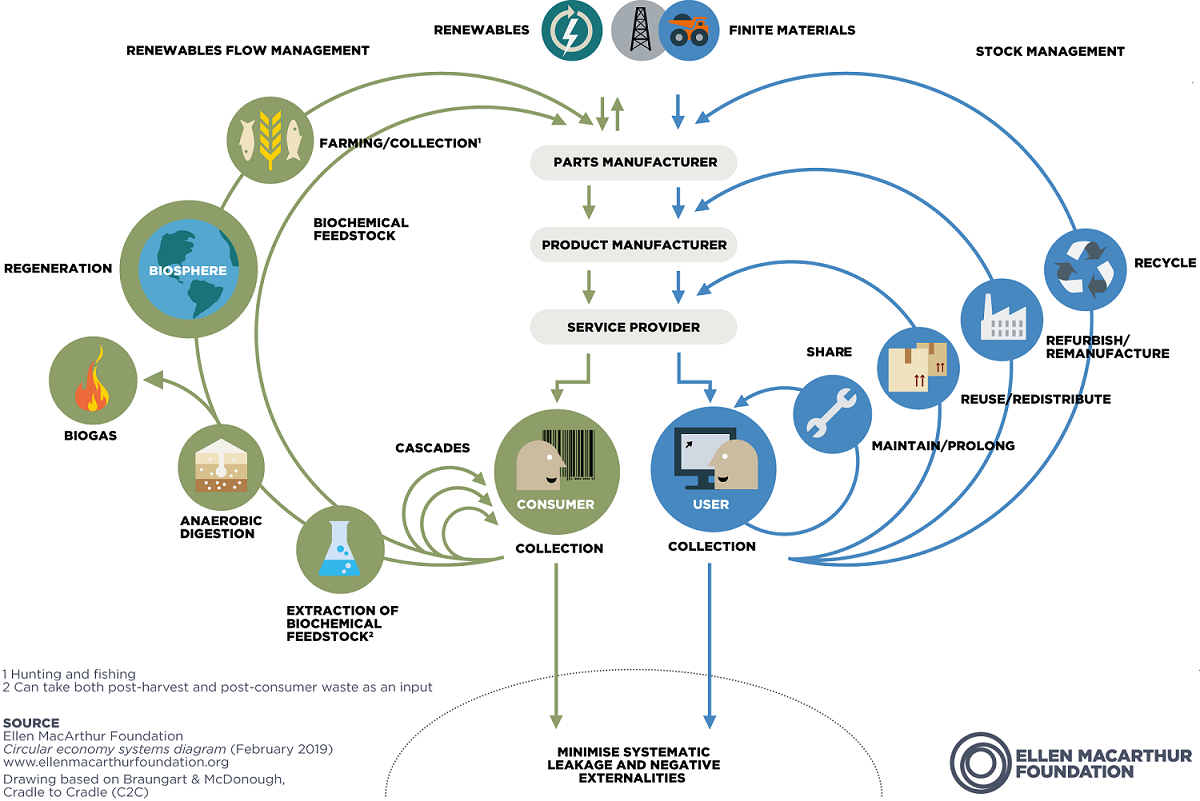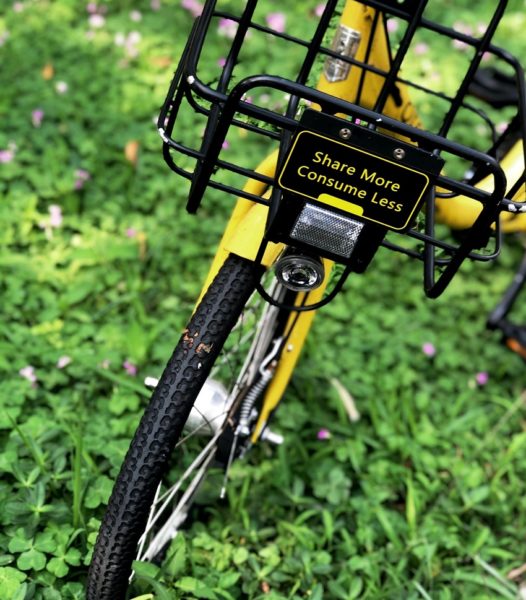
Understanding the Circular Economy
The business world may be the only area more in love with technical jargon than environmental science. So it’s no surprise that environmental business initiatives lean towards the incomprehensible. Even though 62% of consumers say they are not familiar with the term “circular economy” it represents a paradigm shift that could make businesses that pursue it truly sustainable.
Circular Economy
The concept of a circular economy was first presented in the 2002 book Cradle to Cradle. The term contrasts with the more common linear economic model in which resources are used only once. In the linear “take-make-waste” economy, resources are extracted and turned into products that are disposed of at the end of their useful life. This approach has dominated since the industrial revolution. Without rejecting technology at all, the circular economy aims to return to a preindustrial mindset that mimics natural ecosystems in which energy and materials cycle endlessly.
That’s very different from the way things work now. In 2015, about two-thirds of all materials that passed through the economy – 67 billion tons – were wasted. When thinking about the circular economy, it’s tempting to focus on the waste, since that’s the most obvious difference. Maximizing recycling is absolutely critical to achieving a circular economy, but the circular economy is not just a new word for recycling. There’s more to it than simply tossing used items in the blue bin.
The following clever video from the Ellen MacArthur Foundation provides a quick explanation of the circular economy and how society can re-think progress.
[embedded content]
Three principles guide a circular economy:
- Closed cycles
- Renewable energy
- Systems thinking
Implementing these principles requires process improvements at every step of a product’s lifecycle, designing for repairability and recyclability in the first place and using fewer resources more efficiently to manufacture and operate products.
Examples of the Circular Economy
A textbook example of circularity, the Kalundborg Symbiosis in Denmark comprises 22 separate waste exchange agreements among local companies. Spent yeast from an insulin manufacturer generates biogas and fertilizer; a coal power plant scrubs sulfur dioxide from its smoke and uses it to make gypsum, which it sells to a wallboard factory. None of these are “sustainable industries.” But the partnerships have reduced carbon dioxide emissions by 635,000 metric tons a year.
In the United States, packaging giant DS Smith partnered with the Ellen MacArthur Foundation to help them develop a system in which their own paper mill, package manufacturing plant, and recycling plant can make, use, collect, and recycle new corrugated boxes in two weeks.

Challenges to the Circular Economy
There’s an aesthetic beauty to the idea of circularity, with creation and destruction in perfect balance. But in practice, population growth and economic growth are human values – some would say imperatives – that are hard to reconcile with the concept. However, the Ellen MacArthur Foundation asserts that economic growth can be achieved in a circular economy through increased revenue from emerging circular activities and reduced production costs through increased efficiency. A more radical stance holds that economic growth is not necessary when everyone’s needs are already comfortably met. This position parallels the observation that population growth naturally slows with increased gender equality and economic prosperity.
More practically, even elegant systems are hard to keep entirely closed. For example, copper is an infinitely recyclable material, but the technologies needed to replace fossil fuels require more copper than is currently in circulation.
Some people have heralded renting clothing as a circular alternative to fast fashion. But when the additional packaging, shipping, and deep cleaning between customers was taken into consideration, simply wearing one’s own wardrobe longer before passing items to new users came out as more sustainable.

How Consumers Contribute to the Circular Economy
Developing a circular economy will require overhauling almost every aspect of industry, and you can take direct action to help invent a sustainable, circular economy. But the consumer actions that support a circular economy are mostly familiar and simple.
- Buy less. Don’t just buy less stuff, buy less electricity; less house; fewer, smaller cars. Take only what you need.
- Buy better. When you shop, buy the best quality you can afford or buy secondhand. Prioritize quality over quantity.
- Use what you buy more. It’s not about how long something sits in your closet or garage before you pass it on. It’s about making full use of the resources you consume. Wear out your clothes, repair household items and refresh instead of replacing dated décor. And when you can’t get any more use out of an item, recycle it whenever possible.
This article was originally published on May 21, 2021.